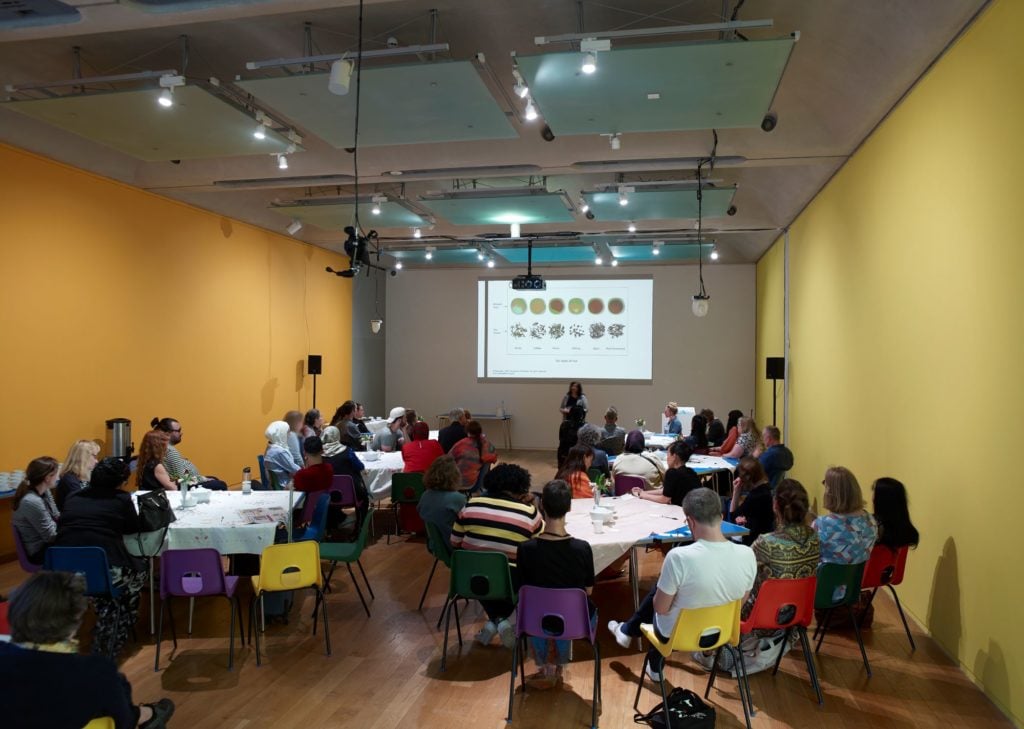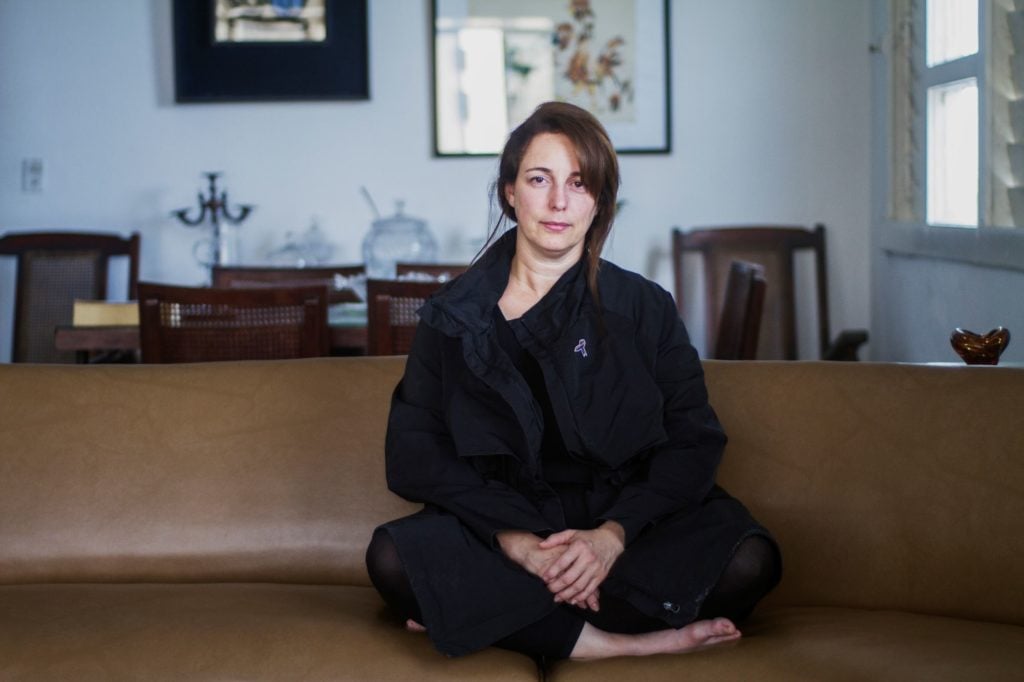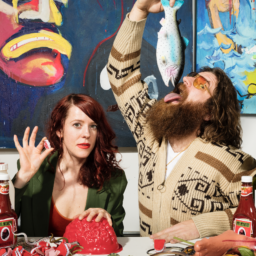Cuban artist Tania Bruguera has long wanted to open her School of Integration, but had never found the right place or partners until last month. That’s when her intensive course in cultural diversity transformed the Manchester Art Gallery into something more like a classroom.
The ambitious project, the latest manifestation of Bruguera’s organization Art Útil (art as tool), was a highlight of last month’s Manchester International Festival. More than 3,400 people signed up for the school’s eclectic syllabus, which ranged from cookery lessons to banner making. The goal, Bruguera says, was to show that “no one’s culture is better than another person’s culture” and that integration is a “two-way street.”
The project’s timing presented an added urgency for the artist, who says society is “quickly going backwards, especially politically.” Bruguera’s school was taking place in England amid the anti-migrant rhetoric, euphemistically called “taking back control of borders,” used by politicians who support a hard Brexit from the European Union.
The artist says she hoped the School of Integration would help “bring complexity and consideration to the discussion around immigration instead of relying on confused and extreme emotions.”

Tania Bruguera’s School of Integration, Manchester International Festival 19. Photo by Michael Pollard.
Anyone could take a British citizenship test, which was among the drop-in sessions on offer in the School of Integration at the museum. (All sessions were free but most had to be pre-booked.) Multiple-choice questions on the test ranged included Who built the Tower of London? Which British colony declared independence because it demanded no taxation without representation?
Immigrants and their children tended to get more questions correct and pass the test, says Shanaz Gulzar, an artist and Manchester International producer who worked closely with Bruguera on the project. “My colleague who is white British failed,” Gulzar says. “Maybe if you come from an immigrant background you have a thirst for history because that helps you place yourself even though you are always being told ‘to go home.'”
Many of the classes took place surrounded by Manchester’s collection of 19th-century art, acquired when the city’s economy boomed during the Industrial Revolution. “It is a collection of colonial portraiture—all the things Britain did to the world,” Bruguera says. Decolonization should be talked about “especially in museums,” she says, and “museums should be sanctuaries for migrants.”

The School of Integration’s Pakistan-style threading class in the Manchester Art Gallery. Photo by Javier Pes.
Another well-attended class was led by two Manchester-based, British-Pakistani women. They taught a hands-on lesson about threading to remove unwanted hair, which has its origins in China and Persia. The class took place in a gallery where some of Manchester’s most famous 19th-century paintings hang. Among them is Hylas and the Nymphs (1896), John William Waterhouse’s canvas depicting a male youth falling for the charms of nude water nymphs.
It is one thing to hold a 90-minute lesson in the gallery, but when a radical change seems permanent it can lead to a backlash, as the Manchester Art Gallery discovered last year. Kate Jesson, the museum’s curator of Modern and contemporary art, recalls “Nymphgate” with a rueful smile. That was when artist Sonia Boyce temporarily removed Waterhouse’s canvas to make a point about representation in historic collections, prompting media outcry. Now, Boyce’s wallpaper and video intervention Six Acts, some of the irate comments, and Waterhouse’s canvas share the same gallery.
The socially-engaged director of Manchester Art Gallery, Alistair Hudson, took Nymphgate in his stride. (He began the job a few days after the story broke.) He is committed to making the city’s prestigious museum more “useful,” writing that the School of Integration shows how a museum can be a place where everyone can learn about another’s culture. Unlike Boyce’s project, no one seemed upset by Bruguera’s school taking over the galleries, though in many ways it was as radical a challenge to the traditional division of power between an institution and its visitors.
In total, more than 100 Manchester residents from 53 countries led the various classes that took place during July. Bruguera says that it meant she had to surrender artistic control. “In socially-engaged projects, I’m not the author but an ‘initiator,'” she says.
“These temples of culture need to be more open,” Gulzar says. “There’s no going back. Who knows what could be the next piece of work taking this forward?” Bruguera has shown a way.










